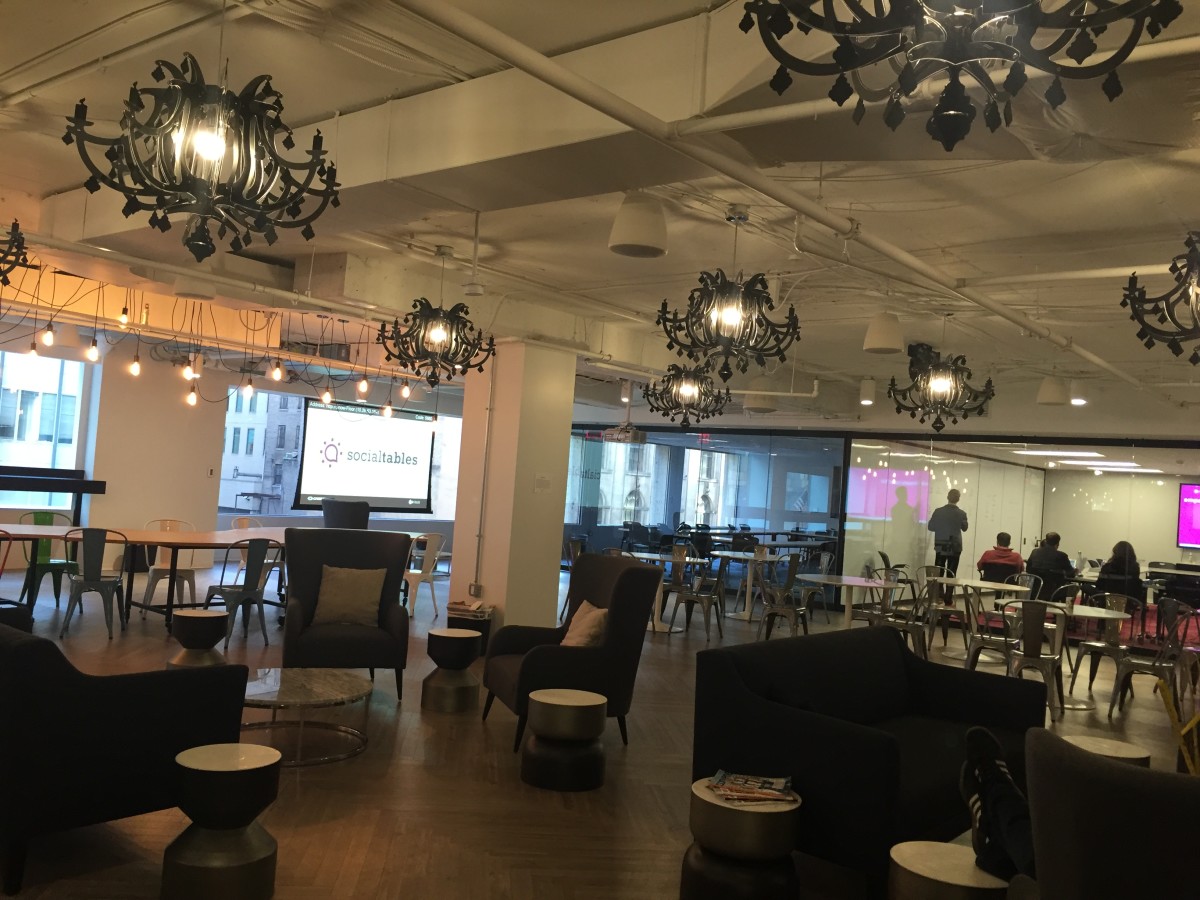For the past decade, tech companies have been leaders and influencers when it comes to workplace design.
Originally recognized for playful workspace amenities, “tech companies are growing up” as my fellow Gensler coworkers Khaing Sabe and Lexi Harmon pointed out in a recent blog post. Tech companies have shifted their focus to thoughtful workplace design, emphasizing functionality, ergonomic quality, digital integration and work/life integration. And in the meantime, companies within traditional industries are catching up. In the D.C. metro area, we’ve witnessed this trend within the publishing (Washington Post), legal (Sidley Austin) and financial (Capital One’s office in Tysons Corner) industries with firms reimagining their workspaces to include state-of-the-art facilities and amenities.
Of course, the adoption of these and other workplace design trends begs a key question: What impact do these trends have on how companies perform? At Gensler, the design firm where I work, we’ve turned to research in order to find some answers. We recently revealed the results of our 2016 Workplace Survey, a PhD.-led research survey that we conduct every three years. We surveyed a sample of more than 4,000 U.S. office workers across 11 different industries, including tech.
Read the survey
If you’re interested in these topics, come to the Ambassador Program, a series of free events we’re organizing on design, tech and policy. Our most recent was on virtual reality and app-based location software. Our second event is on Tuesday, Oct. 25 at 5:30 p.m. at Gensler D.C. (2020 K St. NW).
RSVP
Our 2016 research discovered great workplace design drives creativity and innovation. However, this year, we were able to look beyond the impact of the physical work environment to the broader drivers of innovation in today’s workplace. Organizational innovation proves to be driven by three things:
- The physical work environment and how well it supports collaboration.
- The level of meaning an employee sees in their work — making a difference.
- At-work relationships, particularly with one’s manager.
Responses from today’s tech workers reveal opportunities for improvement in workplace performance as measured by Gensler’s Workplace Performance Index (WPI). Tech organizations averaged a score of 72 on a 100-point scale. Although this is a slightly higher WPI than the average of respondents across all sectors, survey respondents who identified their workplaces as among the most innovative, ranked their organization’s WPI as an average of 83.
In other words, tech remains a leader in comparison to other industries when considering our five workplace performance indicators. However, when compared to the most innovative organizations, tech has room for improvement.

So what workplace strategies will keep tech sector firms among the most innovative organizations?
As other industries embrace the creative office, tech companies should adopt a strategy that adapts to the individual experience. Creating choice in the workplace is paramount. Innovators report that choice and access to amenities are two of the key drivers that distinguish the innovative workplace. Giving employees meaningful choices in when and where to work allows them to curate their own workplace experiences.
Instead of trying to enforce a “one-size-fits-all” mentality, the most effective workplaces are designed to accommodate a range of workstyles and preferences. Only one in three tech sector employees surveyed report the ability to choose when and where to work — a key factor in workplace effectiveness. This represents a significant opportunity for improvement moving forward.
However, choice must be meaningful and confined to a set of appropriate parameters, as workplace designers are discovering. And meaningful choice needs to encompass the entire work environment — individual workspaces, collaboration spaces and shared amenities. Design solutions have tended to focus on individual and collaborative spaces.
Creating choice in the workplace is paramount.
What the findings from the 2016 Gensler Workplace Survey uncover, however, is that amenity spaces are no longer just “nice to have” or merely about the “cool factor” of your office. Rather, amenity spaces have become “must-have” spaces that provide employees critical options for different work settings throughout the day. Thoughtful planning needs to go into the development of these amenity spaces so that they are flexible enough to support both work and social environments. Designing your cafe space to have convenient power and data locations, acoustic solutions, audio-visual integration and a variety of furniture settings ensures your cafe will function just as well for that birthday celebration as for that someone who is looking to work away from their desk for a couple of hours.
Additionally, giving employees choices in the types of amenities they have is becoming more common. At a local D.C.-area tech company, we recently gave employees the chance to vote on how to provision certain amenity spaces. Employees overwhelmingly chose a technology-free “retreat” zone over the option of a game room. This hints at yet another set of survey findings: innovators are more likely to exhibit adaptive office behavior when granted choice and access to amenities.
By designing our workplaces to give employees more choices, we create work environments that can be more effectively tailored to an individual employee’s needs and more conducive to creativity. And in an industry as competitive and innovation-dependent as tech, such a move can make all the difference between a top-performing company and one that’s playing catch-up.







